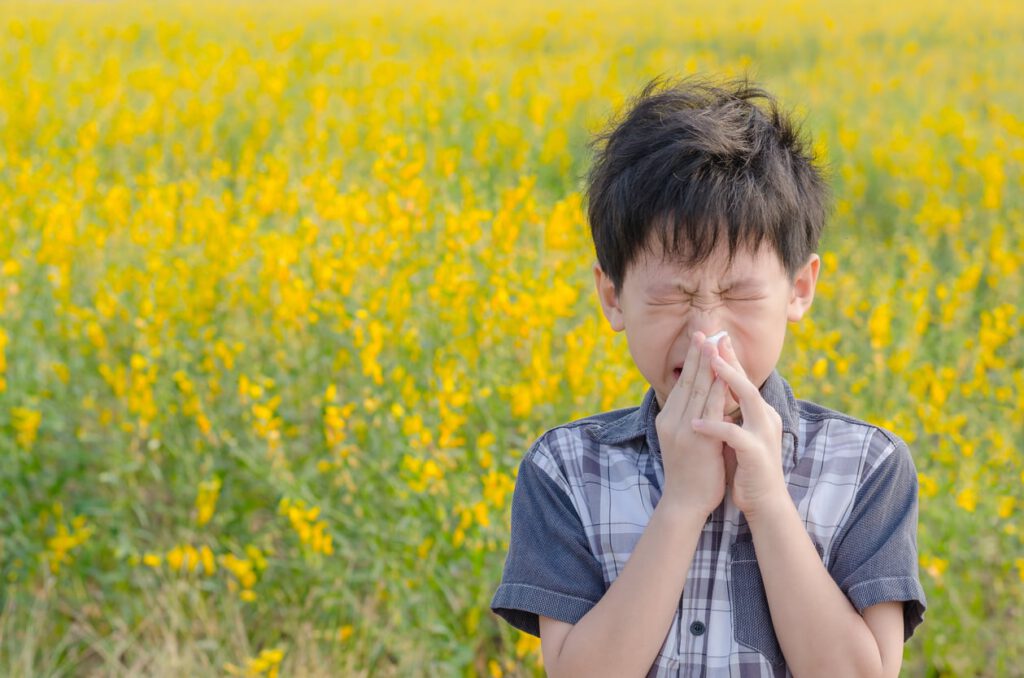This week, we released a new 23andMe+ Wellness report on seasonal allergies that is powered by 23andMe Research.
While the sniffling, sneezing and itchy eyes that come with seasonal allergies are often triggered by pollen from blooming trees and flowers in spring and summer, many of those with seasonal allergies also have symptoms in the fall when levels of allergens from weeds and mold are at their highest.
 A Common Condition
A Common Condition
Seasonal allergies, also known as hay fever or allergic rhinitis, are relatively common. It is estimated that around 27 percent of people in the U.S. are allergic to grasses, trees, and weeds. Still, the actual percentage of people who develop symptoms of seasonal allergies is less clear. Many who might experience seasonal allergies are not exposed to pollens or allergens that would trigger a reaction, so remain unaware. The condition tends to hit women harder than men. A little over ten percent of males have seasonal allergies. More than 17 percent of women report having the condition, according to 23andMe internal data from customers who consented to participate in research.
The US states with the least prevalence of seasonal allergies among 23andMe customers who consented to participate in research are Hawaii, New York, California, and Florida. Customers in Oklahoma, New Mexico, and Kentucky, were the most likely to report seasonal allergies.
A recent study indicated that climate change might worsen the situation for some due to the lengthening of the pollen season in North America.
Beyond the common symptoms of stuffy noses and itchy eyes, seasonal allergies and their associated symptoms can also lead to other issues such as difficulty sleeping or difficulty concentrating during the day. In addition, individuals with seasonal allergies are more likely to develop asthma or experience difficulty breathing or wheezing.
A New Report
Our new report is powered by data from people who have consented to participate in 23andMe research and uses machine learning techniques to estimate an individual’s likelihood of having seasonal allergies to trees, grasses, weeds, and or molds.
This estimate is made using a statistical model that includes more than 6,500 genetic markers and information on an individual’s ethnicity and birth sex. You can learn more about the science and methodology behind our new report in this white paper.
Understanding Seasonal Allergies
While we know that mold or pollen wafting through the air from budding trees, grasses, and weeds triggers allergic reactions, scientists are still digging deeper to better understand why.
Allergic reactions happen when a hypersensitive immune system mistakes a normally harmless substance for a harmful one. When the immune system detects these so-called allergens, it triggers an immune response meant to protect the body.
Research indicates that about half of those living in the U.S. are sensitive to at least one common allergen. That might include pollen, which is seasonal, but also other allergens such as pet dander, dust, and insect bites. While most allergic reactions are mild, some contribute to asthma or eczema and can be very serious and even life-threatening.
Susceptibility to allergies is in part genetic. One’s environment also plays an important role in developing allergies. 23andMe scientists and collaborators have identified many genetic variants associated with allergies. We also published studies on the genetic pathways for allergic rhinitis. Our scientists have also looked into the genetic associations between allergies, eczema, and asthma, and the age of onset. That work allows us to understand the underlying causes better and offers researchers potential new targets for treatments.
Managing and Treating Seasonal Allergies
Limiting exposure to allergens — wearing masks while working outside or staying indoors when the pollen count is highest — could reduce the chance of triggering allergy symptoms. In addition, there are also many over-the-counter and prescription treatments for allergies.
Antihistamines or nasal sprays can treat symptoms, and nasal irrigation to wash out allergens can help alleviate symptoms. Those treatments combined with lifestyle changes to limit exposure also help. Beyond using air filters and staying indoors when pollen is highest, more frequent cleaning of household surfaces, clothing, and sheets can also help.
Learn More
23andMe’s new Seasonal Allergies report (powered by 23andMe Research) is available to 23andMe+ members. To view your report, go here.
Not a customer?
Find out more here.



